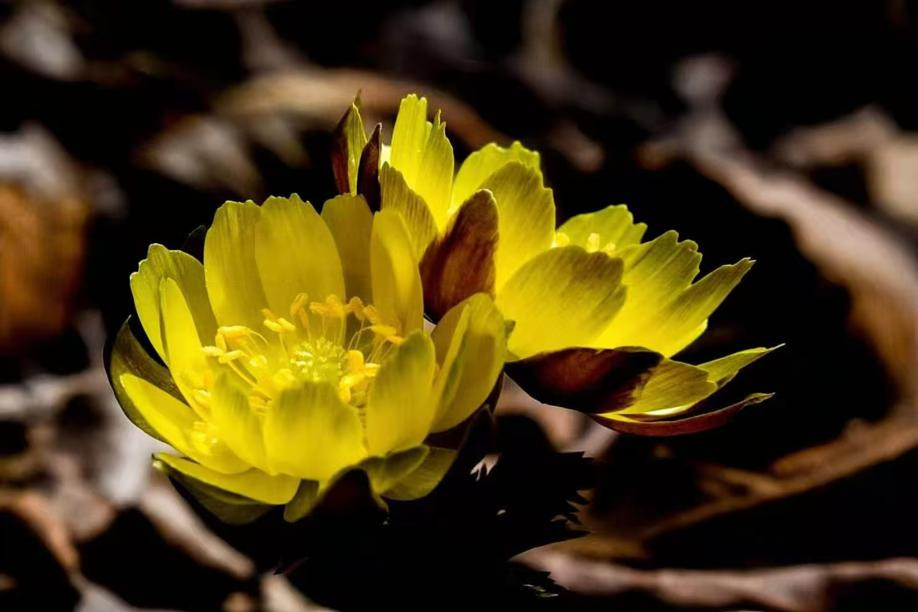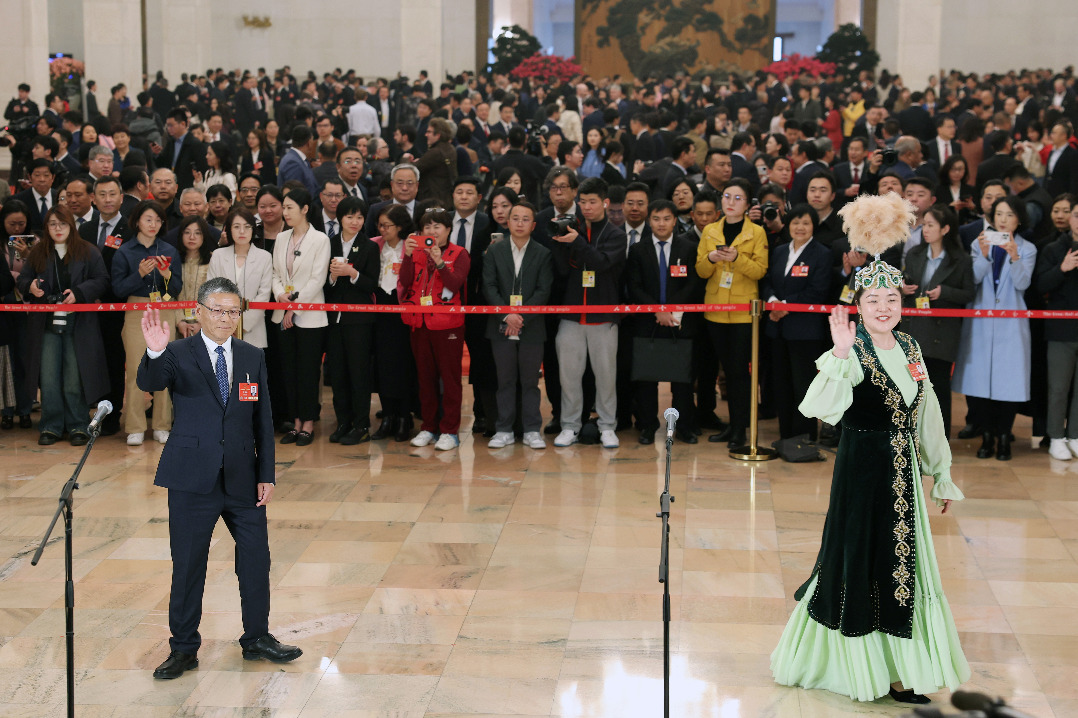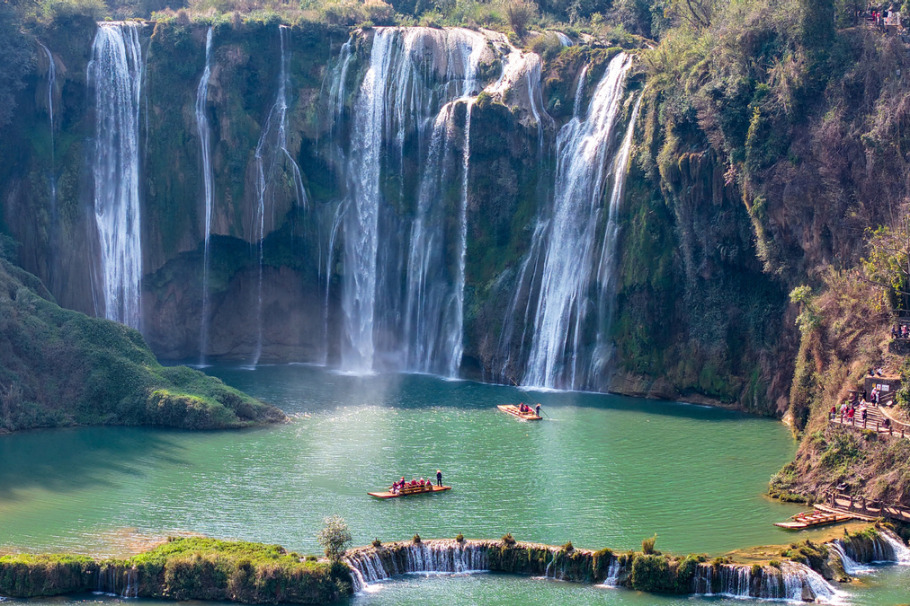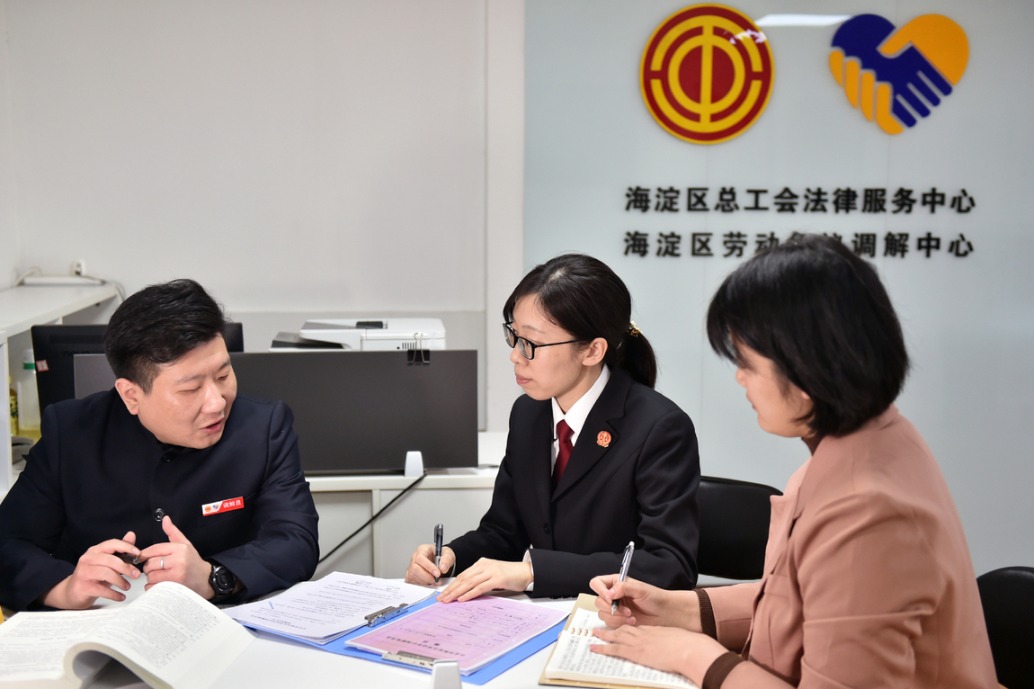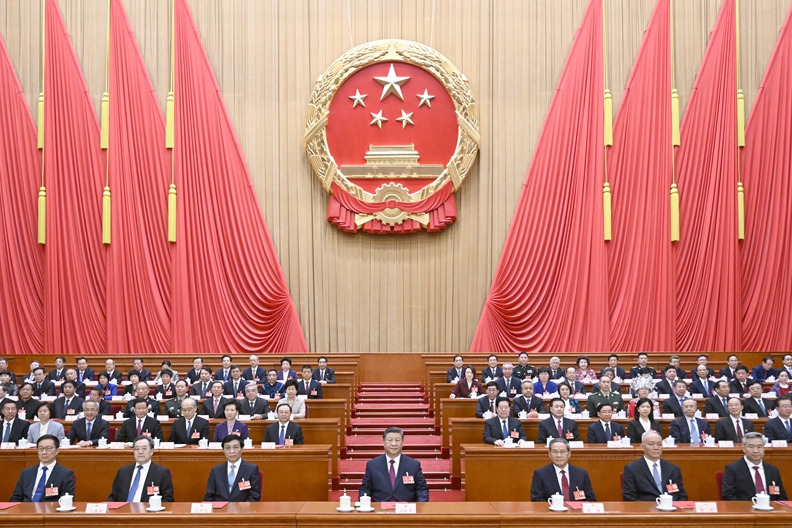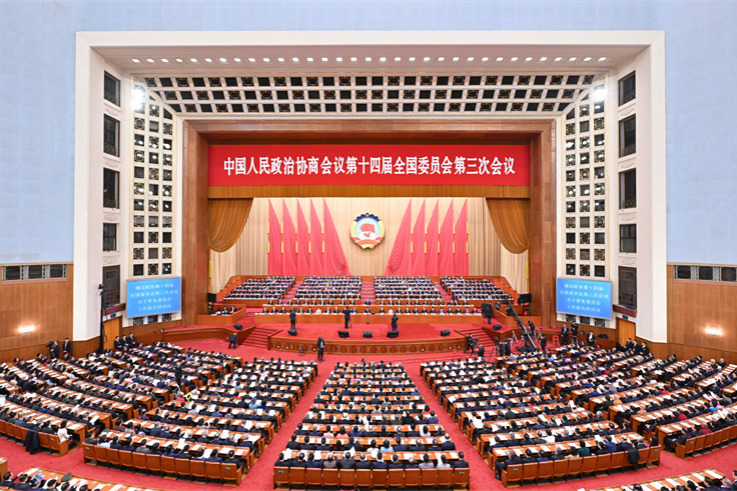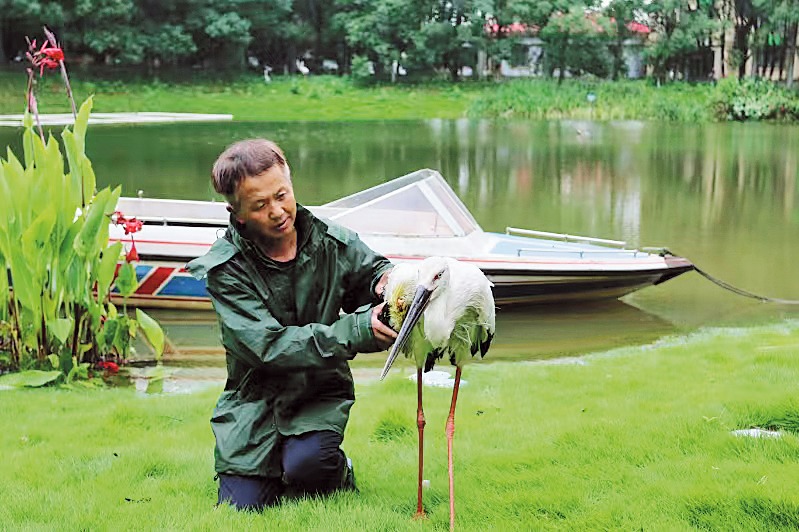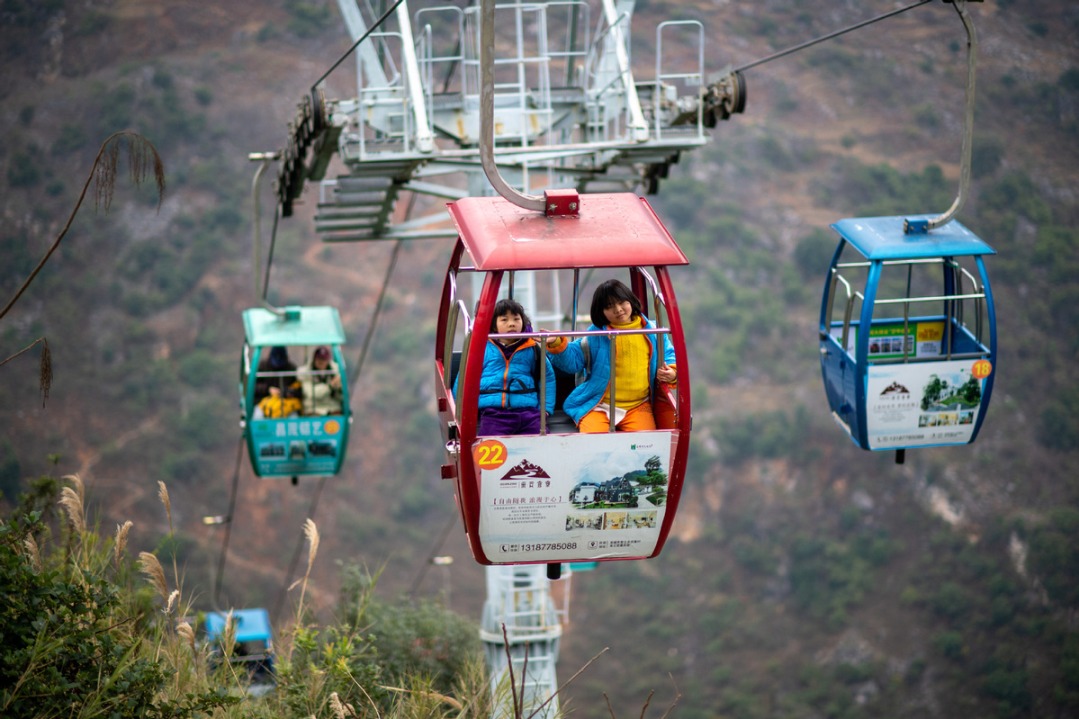Bringing cultural relics back to life through protection

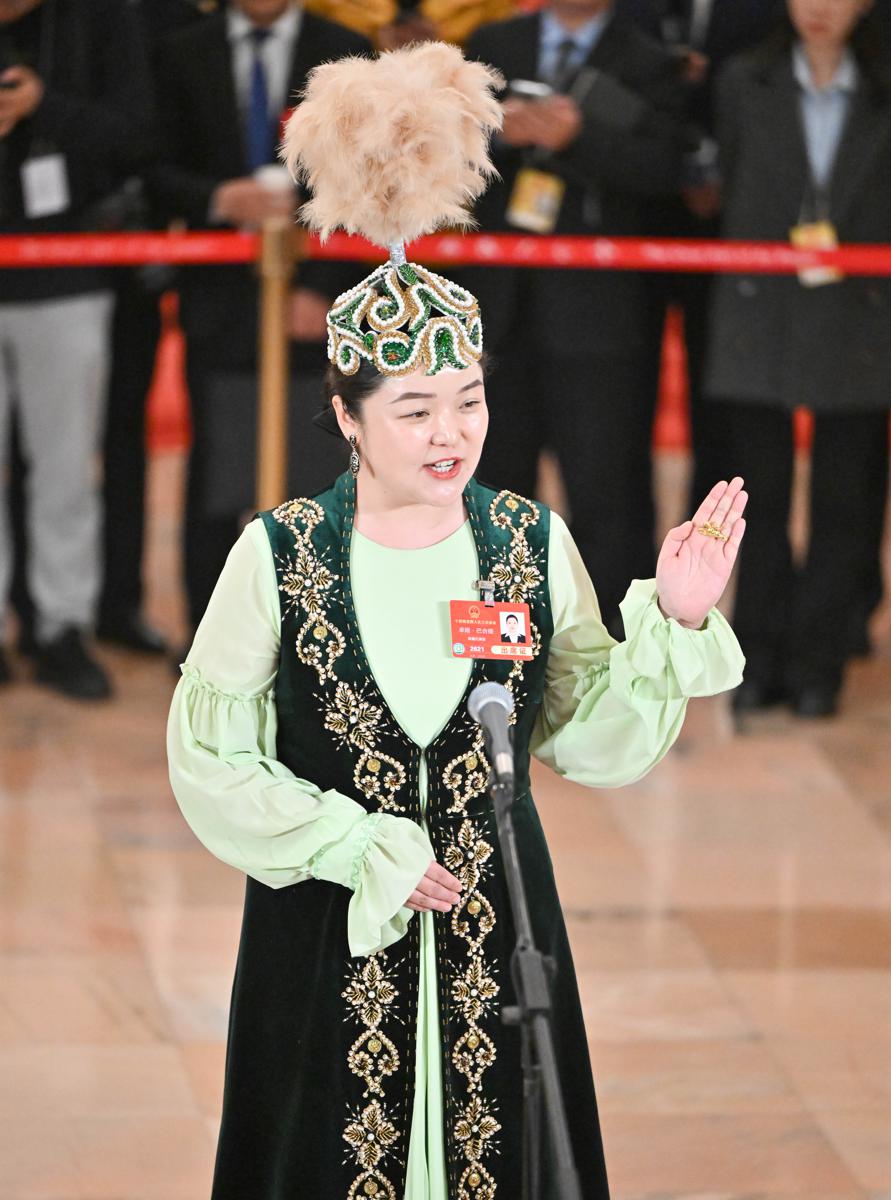
Cultural relics require better protection and utilization to bring them back to life, said Zoya Bahit, an archaeologist from the Xinjiang Uygur autonomous region and deputy of the National People's Congress, at this year's deputies' passage interview on Tuesday before the closing meeting of the third session of the 14th National People's Congress.
As a researcher at the Altay Museum in Xinjiang, she is responsible for protecting immovable cultural heritage sites in the wild and introducing the artifacts at the museum.
She said her hometown Altay prefecture boasts many precious historical cultural relics from multiple ethnic groups.
For example, the first frame of the 2022 Beijing Winter Olympics prelude film is a snowflake image found from the Dundebulak rock art complex in Altay. "It drifted across the nation and the world. I believe this is a manifestation of bringing cultural relics to life," she said.
She highlighted a gold horse at the museum leaping into the air with a majestic appearance, full of the momentum of covering great distances in a single bound.
This ancient Silk Road artifact vividly demonstrates the long history and splendid Chinese culture created collectively by the various ethnic groups of our Chinese family, she said.
As an NPC deputy, she cares about immovable cultural heritage sites and suggests better protection. According to her, there is a rich variety of rock art relics, which are relatively large in northwestern China.
Mostly carved between mountainous terrain and rock surfaces, these artifacts have gradually suffered various forms of damage such as cracks, hollowing, and erosion caused by long-term exposure to temperature fluctuations, wind erosion, and biological degradation, she said.
"I hope through digital collection, we can better present the current state of cultural relics, show their patterns in a complete and timely way, and preserve materials for research," she said.
"I deeply feel that cultural relics carry the long history and splendid culture of the Chinese nation. Protecting and utilizing them is to safeguard the enduring roots of the spirits of the Chinese nation. Passing down and bringing to life the treasure is an important responsibility of heritage professionals in the new era," she said.
















